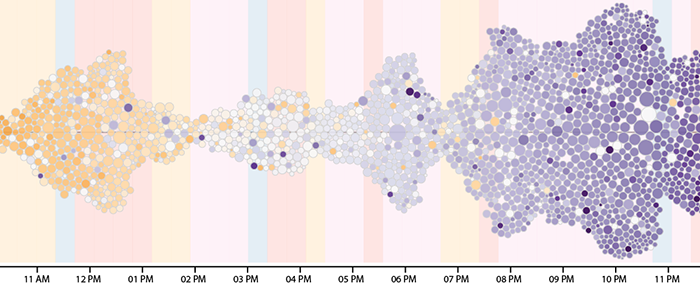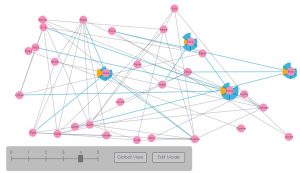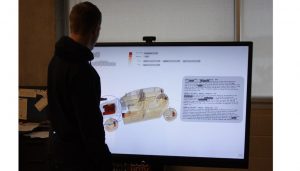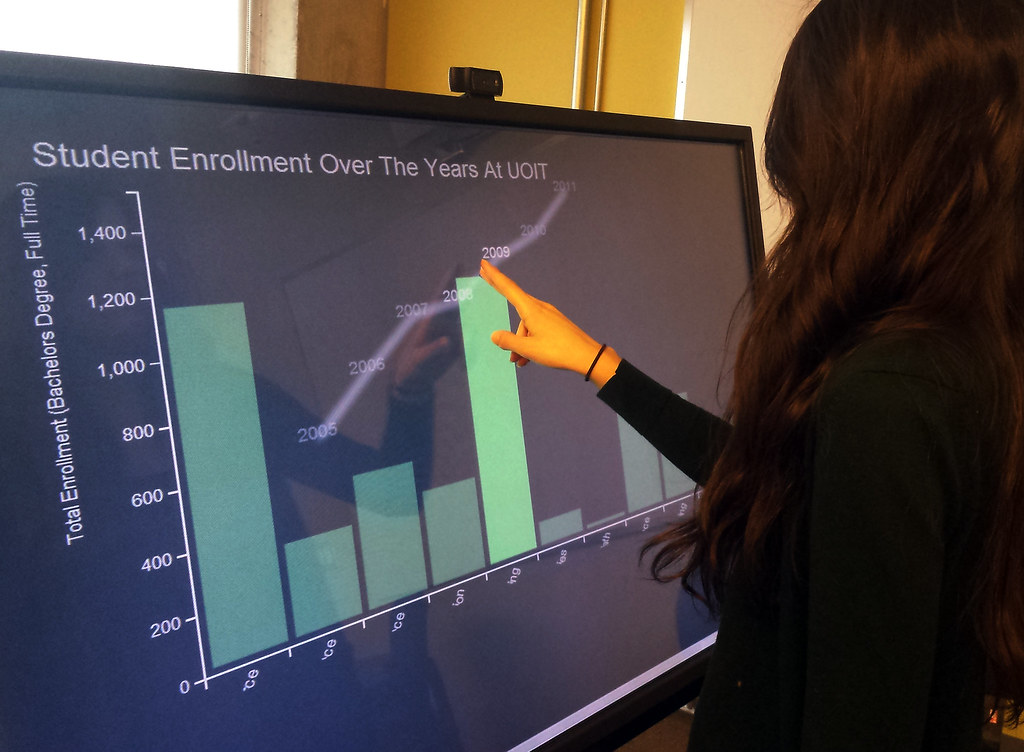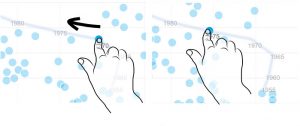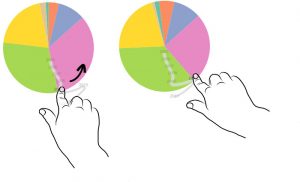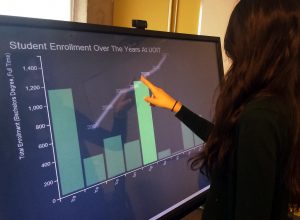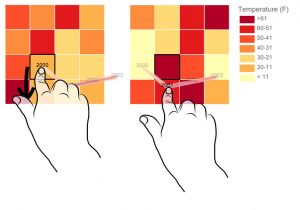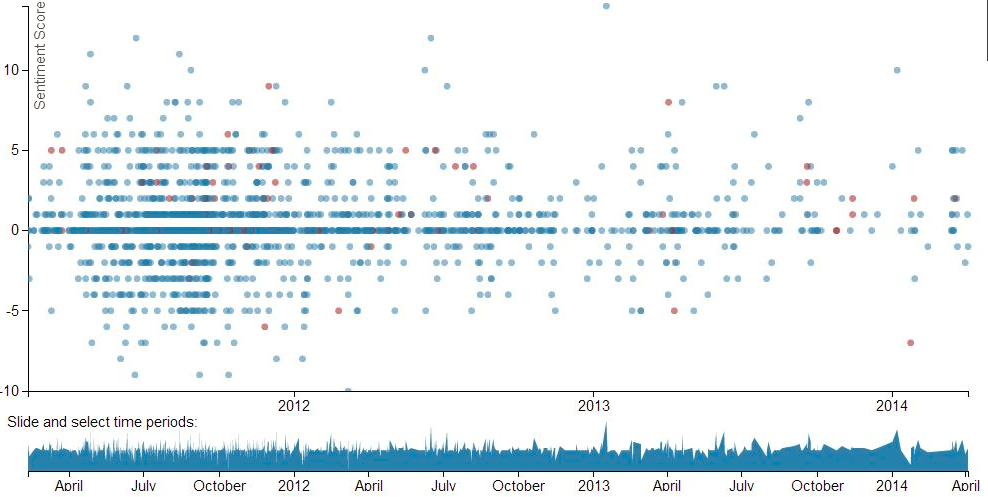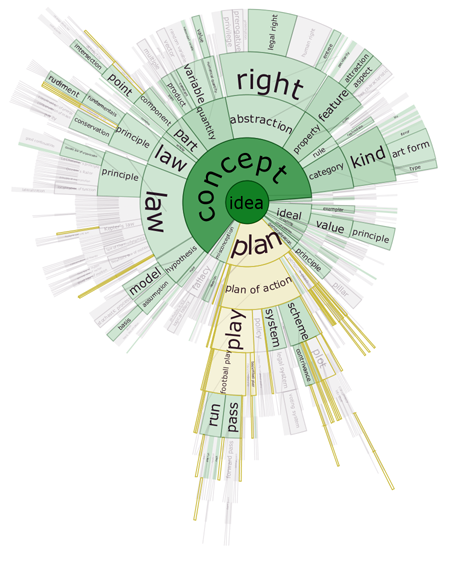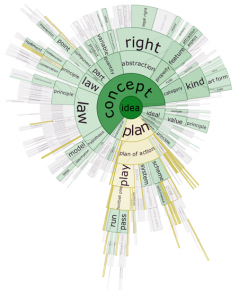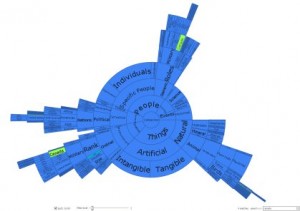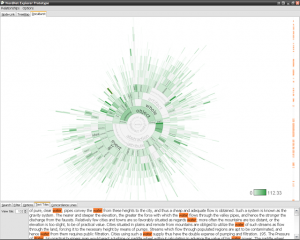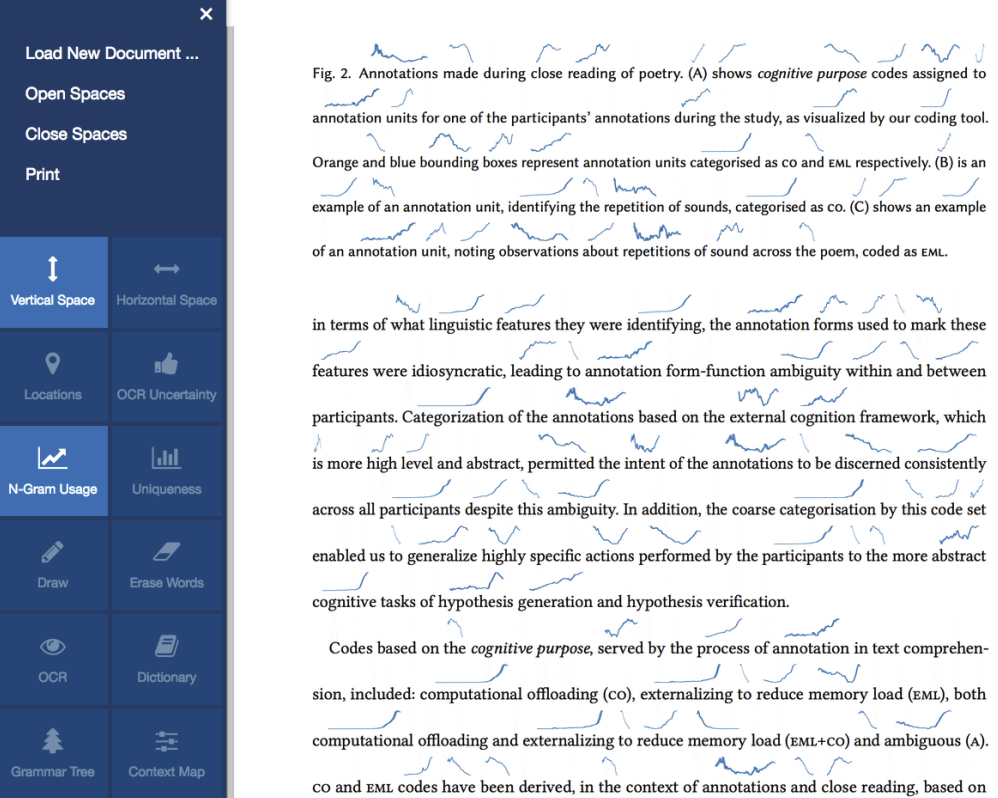
Contributors:
Adam James Bradley, Christopher Collins, Victor Sawal, and Sheelagh Carpendale
In this paper, we present a framework that allows people who work with analog texts to leverage the affordances of digital technology, such as data visualization, computational linguistics, and search, using any web-based mobile device with a camera. After taking a picture of a particular page or set of pages from a text or uploading an existing image, our prototype system builds an interactive digital object that automatically inserts visualizations and interactive elements into the document. Leveraging the findings of previous studies, our framework augments the reading of analog texts with digital tools, making it possible to work with texts in both a digital and analog environment.
Check out our online demo.
Publications
-
[pods name="publication" id="4203" template="Publication Template (list item)" shortcodes=1]
[pods name="publication" id="4230" template="Publication Template (list item)" shortcodes=1]




